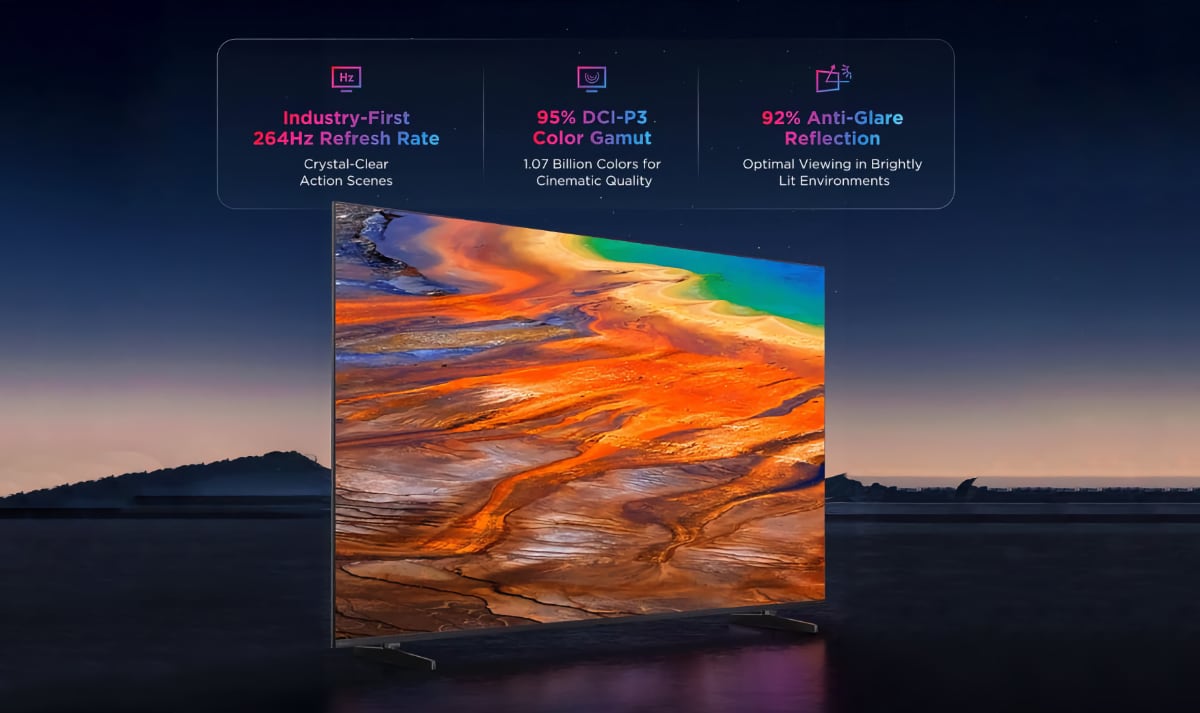The race for higher refresh rates in TVs began with the introduction of HDMI 2.1, and Hisense is now moving to 264Hz, albeit with some caveats.
In 2023, FlatpanelsHD reported that 240Hz 4K TVs are waiting in the wings. The first step has been TV manufacturers' launch of 120Hz models with an optional pseudo-240Hz mode that halves vertical resolution to 1080p for VRR gaming.
As detailed in our article, HDMI 2.1's 48Gbps bandwidth is enabling these advancements, even supporting 4K at 240Hz through lossless DSC (Display Stream Compression), as demonstrated by Nvidia's RTX 4080/4090 and Apple's latest MacBook Pro and Mac mini.
Hisense takes it further
Hisense is taking it one step further with the release of the 98-inch S57 (98E3N Pro) in China. It is the world's first TV with an LCD panel capable of refreshing at 264Hz – 264 times per second.
However, to receive a 264Hz gaming input, the TV must similarly drop to 1080p vertical resolution, meaning it is not yet a "true" 240Hz – or 264Hz – 4K TV.
The TV uses an IPS LCD panel from Chinese panel maker BOE, which also supplies LCD panels to other brands, including Samsung.

It is the industry's first 264Hz TV panel, as emphasized by Hisense and BOE
Priced at $1400 in China
To keep the price down to 9999 yuan ($1400), Hisense has reduced the 98-inch LCD TV's LED backlight to 384 zones and limited the peak brightness to 1000 nits, so it is not exactly cutting-edge in other areas.
Still, it is evident that 240Hz and beyond are coming to high-end TVs sooner rather than later. While it may currently be seen as a spec race, in the long term there are clear advantages to refresh rates beyond 120Hz, such as clearer motion through VRR (Variable Refresh Rate), BFI (Black Frame Insertion), or simply HFR (High Frame Rate) content.
- Source: ITHome







